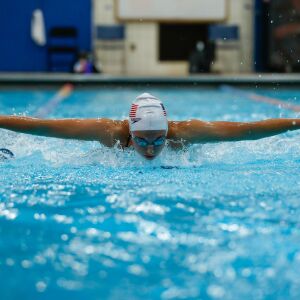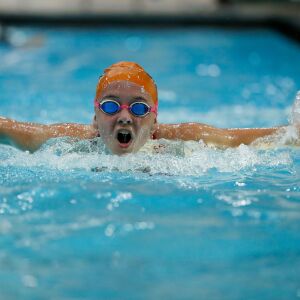Illinois’ first high school sports season in the COVID-19 era will be missing a lot.
Several sports, including football, have been postponed till spring. Relays in swimming are out. Big invitationals in cross-country won’t happen. Paper scorecards in golf have been replaced by a virtual equivalent.
But given the alternatives, the prevailing attitude is the glass is half-full rather than half-empty.
“We’re really lucky we get to compete again,” Evanston senior swimmer Erin Long said. “In the summer, a lot of people were thinking we weren’t going to get a season at all. We’re grateful that we’re getting what we get.”
Six sports will go on this fall: boys and girls cross-country, boys and girls golf, girls tennis and girls swimming.
Some will look much the same as before the pandemic. Other than marking balls to limit contact with opponents, tennis will proceed pretty much as usual.
Golf, socially distanced by its nature, also requires few adjustments. One is an IHSA requirement that players wear masks except when playing a shot, and another is the switch to iWanamaker, a scoring app that replaces manual scorecards.
That means no more huddling around a scoreboard post-match, waiting for results to be posted.
“Kids keep score on their phones, they nod their heads (to opponents) and we leave,” St. Viator boys golf coach Jack Halpin said.
That part is a little different too. In the past, the Lions would pile into vans for the ride home, often with a stop for dinner. Now, Halpin has drafted parents to drive their sons to and from matches.
But the accommodations to coronavirus are a small price to pay for the chance to keep playing in Halpin’s mind.
“The only thing I have to say is this is a year like no other,” he said. “This is all about the kids getting better at the game of golf.”
Halpin said the Lions will be playing more smaller meets than their usual schedule of up to a dozen invitationals a year. That’s also the case for cross-country, which will see more duals and triangulars.
Social distancing can be a challenge in that sport, one that coaches are still sorting out.
“Starting lines will be spaced out, because that’s the easiest thing to control,” St. Ignatius girls cross-country coach Ray Lewis said. “Runners are not tired, you can manipulate where they start. The finish line will be more tricky.”
Lewis doesn’t expect to see multiple finish chutes, but, as with golf, there will be less milling around afterward.
“I see a rep from each team in the chute area pulling their athletes in their direction as quickly as possible,” Lewis said.
One issue for some cross-country teams is where to run with off-campus venues like forest preserves not allowing large gatherings.
“Don’t be surprised if we see full meets run on the track,” Lewis said.
Neuqua Valley boys cross-country coach Paul Vandersteen is not a fan of that idea. “To me, that kind of defeats the purpose of social distancing,” he said.
The Wildcats will host several meets on campus, but Vandersteen revised the course to remove choke points where runners might be more likely to bump elbows jockeying for position.
One thing that hasn’t been decided is whether Neuqua Valley will allow spectators at meets, though Vandersteen said there could be a drive-in option with parents watching from their cars.
How to accommodate fans is also an issue in swimming, the only fall sport being contested indoors.
Schools like Evanston can have hundreds of fans in bleachers above the pool deck. But factoring in the size of some rosters — the Wildkits have more than 90 girls out this fall — and the need for social distancing, the amount of usable space shrinks significantly.
The solution? Virtual meets with each team swimming in its own pool and comparing times. Evanston girls swimming coach Kevin Auger has given some thought about how best to make it work.
He has created a computer program that can do live, combined results from multiple sites that would allow competitors to see their placings in real time.
“The other thing I’m of doing — instead of just streaming the meet — is have the meet be a Google Meet,” Auger said. That would allow parents and other fans to cheer remotely and be displayed on the video board at the Wildkits’ pool.
Auger and his swimmers also have to be creative for workouts because of the big roster. Practices are in shifts to allow for social distancing, which means some swimmers rarely see their teammates.
“We’re going to be doing group Zooms with the full team, which I think will help bring us together,” senior Sam Rhodes said. “Usually we have a bunch of dinners and team bonding activities, which we won’t be able to do this year.
“But we’re going to do our best just to do something.”

























